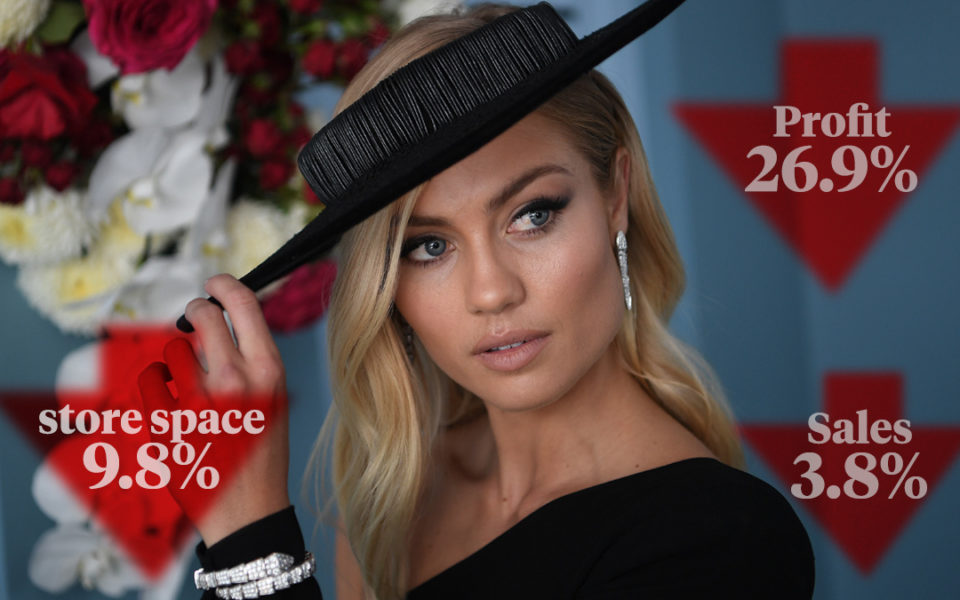General life announcement: There are real people out here turning the clothing-resell biz into a full-time job. Sure, they probably started out by purging their closets of the Urban Outfitters dresses they wore just three times (@ myself), but they have now moved far beyond Marie Kondo and are hitting up thrift stores for gems they’ll turn around and sell for double. So, like, getting paid to shop. I know!
Obviously, going from Lifestyle to Business requires some effort (and basic skills for dealing with pricing, shipping, and random fees). It’ll also require these insider tips. Grab a pen. You’ll want to take notes.
You will need an ~aesthetic~.
It’s alllll about branding, and you’ve gotta think big—as in on par with any other online shopping experience (watch your back, Revolve). This means a clear, preplanned POV for your collection. If a customer can get a good sense of your style and you’re constantly bringing in more that fits that mold, she’ll return because you’re consistent. Voilà: Now, you’re known for killer high-waisted denim or a breezy, boho Free People mood.
Your merch doesn’t have to be designer.
Luxury things aren’t the *only* things that make it rain. Stuff like Lululemon leggings, Zara dresses, and vintage tees work too.
Yes, vintage—but not only vintage.
In addition to thrift stores, source your fashun at places like liquidation centers, garage sales, flea markets, swap meets (where you exchange items with ppl virtually or IRL), eBay, or dead-stock warehouses (they’re where all unsold retail items go to die). You can even raid your mom’s closet.
Feeling overwhelmed? Most resale sites tell you what’s popular, so start there. This is key because sellable trends are more important than NWT (new with tags) stuff. Also crucial: Set your initial budget before you shop—successful sellers spend anywhere from $300 to $1,600 a month, but if all you have is $30, start with $30 and build momentum.
Say it with me: Production Value.
Photograph everything like you’re taking your BFF’s next Insta post. Get multiple angles in good lighting and pay attention to detail. The background in all your shots should be the same, whether that’s a profesh white seamless or a mirror selfie. Style a full look on yourself or a pal and nail some cute poses to help sell that turtleneck or the whole dang outfit (aka “bundle” in resell lingo).
Put on that math hat (other hats this way).
The real money comes from doubling, tripling, or even quadrupling what you spent to buy something. Here’s a scenario: Say you found a Dior sweater for $7 (true story!). If you sell it for $21, you’d technically be doubling your profit (although pls don’t forget to factor in mailing costs, transaction fees, and any cash you might spend on dry cleaning). You’re never gonna get the true OG price back (so don’t even try for hundreds on that Dior knit), but you also shouldn’t inadvertently swindle yourself. Read up on the site’s fine print (boring but necessary) so you’re aware of any extra fees—each platform and shipping company has different ones. And do a quickie search to see what similar finds are selling for before you price something.
Separation + Organization = Everything.
True, not all of us have giant walk-in closets in which to store stuff. But your inventory shouldn’t be mixed in with your actual clothes, where it can get tangled up, stretched out, or snagged. Keep it in another room or somewhere out of the way in nice, clear, dust- and mothproof garment bags or bins.
Take this seriously.
Sticking to a sched is the secret to customer loyalty: Shop every Monday, take pics and price out your merch on Tuesday, and upload it on Wednesday (or whatever timeline works for you). Then repeat. Hold yourself accountable, because your customers will. They’ll be checking for new arrivals each week. Look at you!
— Cosmopolitan to www.cosmopolitan.com



















